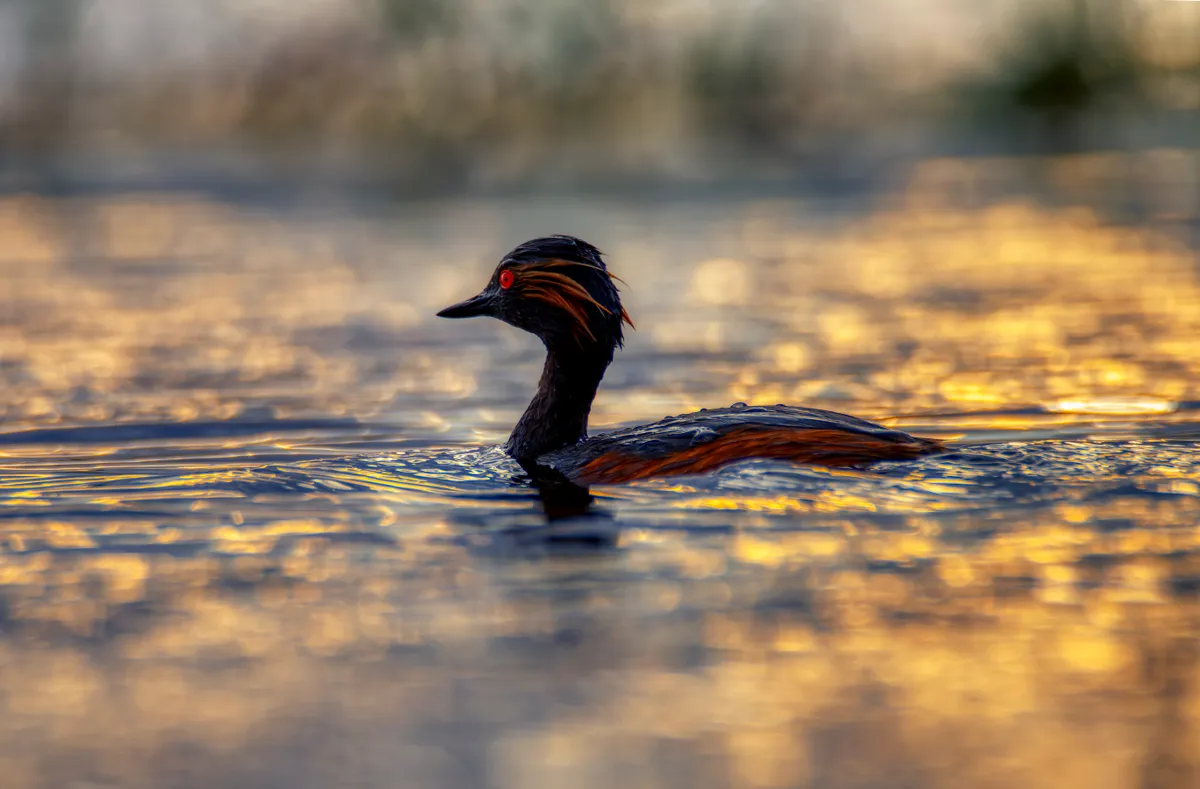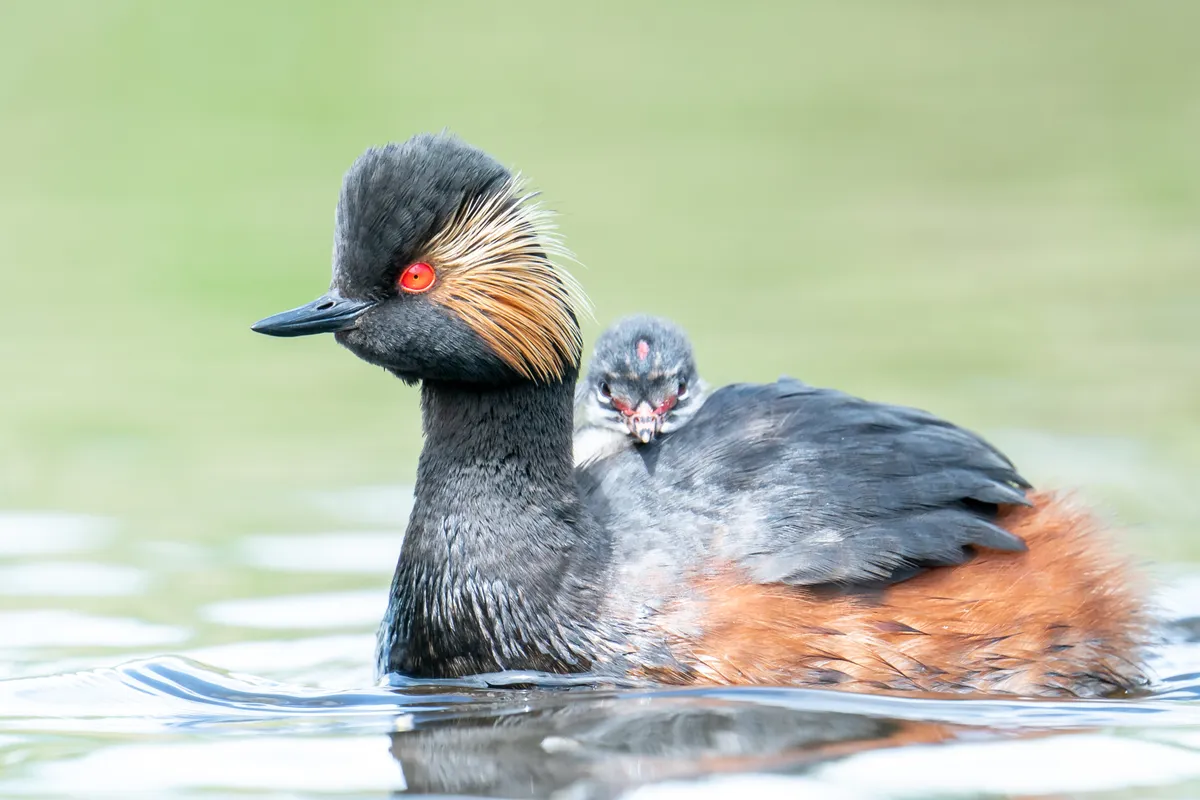The black-necked grebe (Podiceps nigricollis) is rare and hard to find in Britain. There are just 55 breeding pairs, and a maximum of 115 individuals here in winter. Not many birdwatchers see it, or even have conversations about it.
Whilst numbers here in Britain are limited, the black-necked grebe is the most abundant grebe in the world, with many of these residing in North America. And it's these birds that undergo an incredible body transformation every year.
In this guide we take a closer look at the black-necked grebe, revealing what it looks like, where you can see it, plumage and the unusual – and record-breaking – transformation that the American populations go through every year.
Interested in learning more about Britain’s waterbirds? Check out our guides to wading birds, swans, rails and geese.

- Guide to British seabirds: how to identify and where to see them
- British duck guide: identification, species, facts and where to see
- Tern guide: UK species and how to identify them
Black-necked grebe identification
The black-necked grebe lives up to its name, in that it is our only grebe with a black neck in breeding plumage. It also, like the Slavonian grebe, has yellow-orange head ornamentations, in this case “ears” rather than “horns.”
In winter it goes black and white, and has more black on its head than the Slavonian, less of a cap. It also, at all times of the year, has a quite different head shape: it has a rounded, not flat crown and a distinctly uptilted bill, like a very cheap and short version of an avocet.
Credit: Phill Luckhurst
Black-necked grebe habitat and breeding

It is often difficult to see on richly vegetated lakes, keeping a low profile, and it is very localised in winter. It didn’t breed in Britain until 1904 and has never really taken to these islands. It has a habit of being more sociable than other grebes and usually nests in colonies, often among gulls for protection.
Black-necked grebe distribution
Here in Britain the black-necked grebe is rare but it is by far the most abundant grebe in the world, with a population of some 5 million birds (the great crested numbers only about 1.5 million, despite a much wider range).
Many of these are packed into western North America, where the bird is something of a celebrity. In the autumn the whole population gathers on two hypersaline (very salty) lakes – Lake Mono, California and the Great Salt Lake, Utah – to moult and eat both brine shrimps and alkali flies (yes, these exist!).
Black-necked grebe transformation

During autumn, as they moult and feed on Lake Mono and Great Salt Lake, they allow their wing muscles to shrivel, while the digestive organs vastly increase in size. These changes in proportions are the largest recorded for any bird in the world.
The black-necked grebe also becomes flightless for longer than any flying bird in the world, up to eight months. It then flies to its winter quarters in December to January, later than any other bird! None of this extraordinary activity seems to happen in Europe – weird!
Black-necked grebe population
The black-necked grebe in uncommon in the UK (Amber List of Conservation Concern), with 55 breeding pairs, and a maximum of 115 individuals winter.
